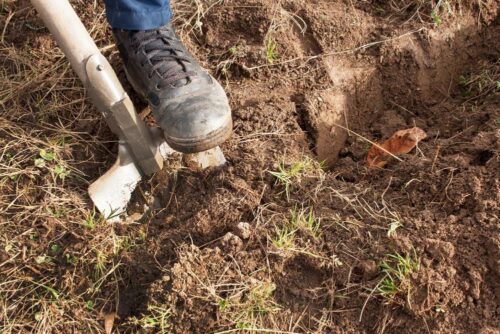How To Make Topsoil? A DIY Guide for a Thriving Garden
Introduction:

Gardening enthusiasts know that good soil is the foundation of a thriving garden. Topsoil is the uppermost layer of soil, and it’s rich in nutrients and organic matter that help plants grow strong and healthy. However, not all garden spaces come equipped with ideal topsoil, leaving gardeners to seek out alternatives. Luckily, making your own topsoil is an easy and affordable solution. In this blog post, we’ll guide you through the process of creating nutrient-rich topsoil that will help your plants flourish.
Step 1: Gather Materials
Before you start, you’ll need to gather the following materials:
Compost:
A key ingredient in homemade topsoil, compost provides essential nutrients and improves soil structure. You can make your own compost using kitchen scraps, yard waste, and other organic materials or purchase it from a local garden center.
Aged Manure:
Aged manure is another nutrient-rich addition to your topsoil. It’s essential to use aged manure, as fresh manure can burn plant roots. You can find aged manure at local farms or garden centers.
Peat Moss or Coconut Coir:
These materials help with water retention and aeration in the soil. Both peat moss and coconut coir can be found at garden centers.
Sand or Perlite:
Adding sand or perlite improves drainage in your topsoil. These materials can also be found at garden centers.
Organic Matter:
Leaf mold, grass clippings, and shredded bark all serve as organic matter that can improve the soil’s texture and nutrient content.
Step 2: Mix the Ingredients
Now that you’ve gathered your materials, it’s time to mix them together. Follow these ratios for a well-balanced topsoil mixture:
- 60% compost
- 20% aged manure
- 10% peat moss or coconut coir
- 10% sand or perlite
- You can also add organic matter to the mix, but the amount will depend on the materials you’re using and your specific soil needs.
Step 3: Test and Amend the Soil
Before using your homemade topsoil, it’s essential to test the pH and nutrient levels. Most plants thrive in slightly acidic to neutral soil, with a pH of 6.0 to 7.0. You can purchase a soil test kit from a garden center or online.
If your soil is too acidic or alkaline, amend it by adding lime to raise the pH or sulfur to lower it. If your soil test reveals nutrient deficiencies, consider adding additional compost or aged manure to the mix.
Step 4: Apply the Topsoil
Now that your homemade topsoil is ready, spread it over your garden beds or mix it with your existing soil. Aim for a depth of 6-12 inches, as this will provide your plants with enough nutrients and space for their roots to grow.
Conclusion:
Creating your own topsoil is an easy and affordable way to ensure your plants have the best possible growing conditions. By making your own nutrient-rich blend, you’ll be well on your way to a thriving and healthy garden. Happy gardening!